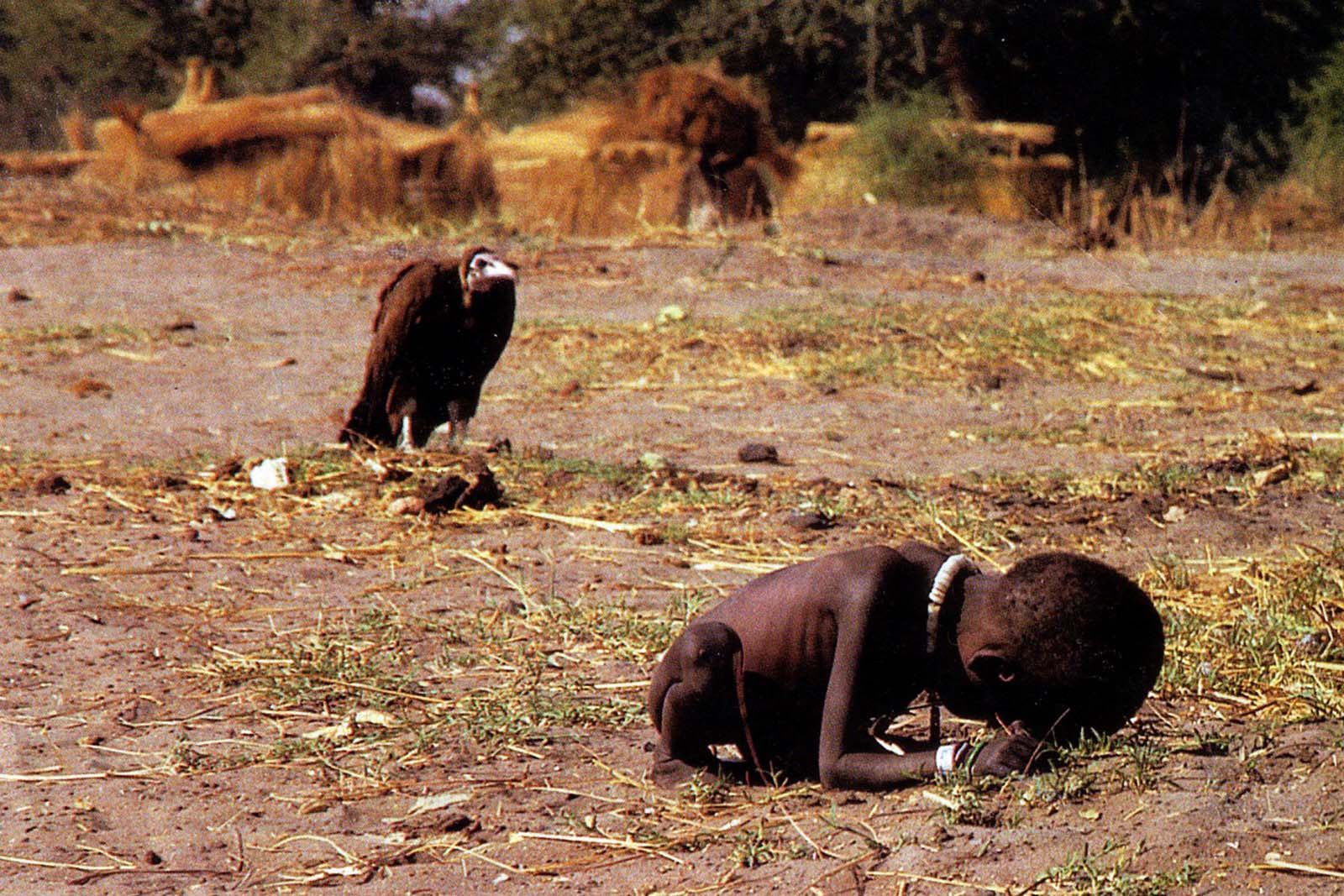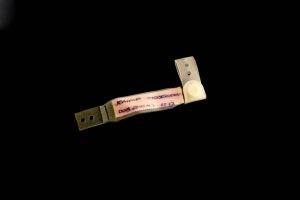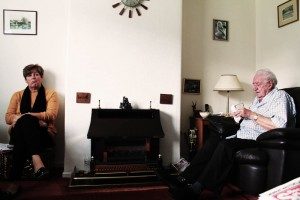
Daily Archives: November 6, 2018
Filters
Initial Ideas
For this project, I am going to be researching and exploring into my mixed heritage, of English and Caribbean blood. And the way that growing up in a western and predominantly white island, has effected my identity, and how Caribbean effect my identity as a seventeen year old. I am also to look at the difference between my families and the lives that they have left and the way that they ended up together.
For the project I am going to use a mixture of mediums, but the main method that I am going to use will be archival images that I will find in family archives. I am also going to analyse images of when I was young and oblivious to how my race separate me out from the rest of my friends and how people would and will continue to see me as difference. And that how I have become aware of the say that my race will impact the rest of my life.
INSPIRATIONS: PAST PERSONAL STUDIES
Here are examples of excellent Personal Studies from last couple of years from students very personal and mature subjects.
Anna Houiellebecq: Inside Out
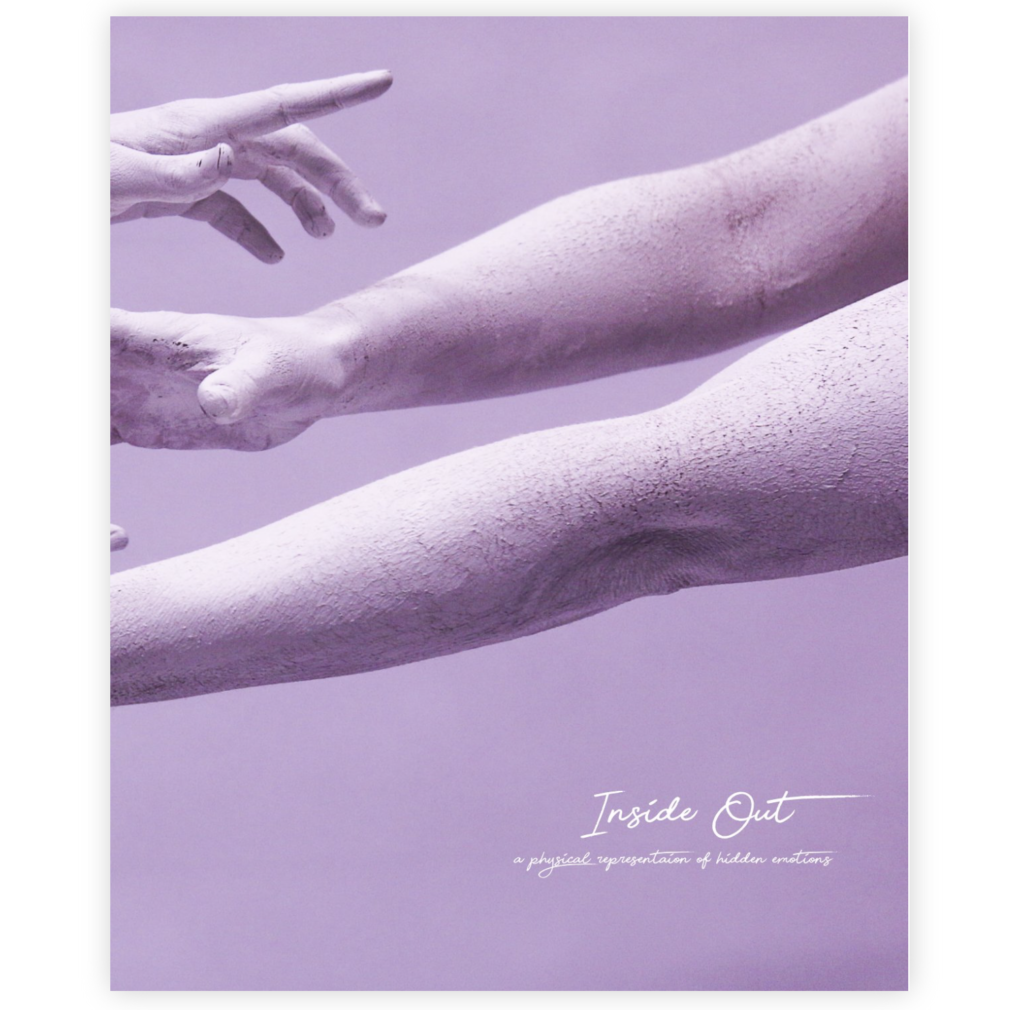
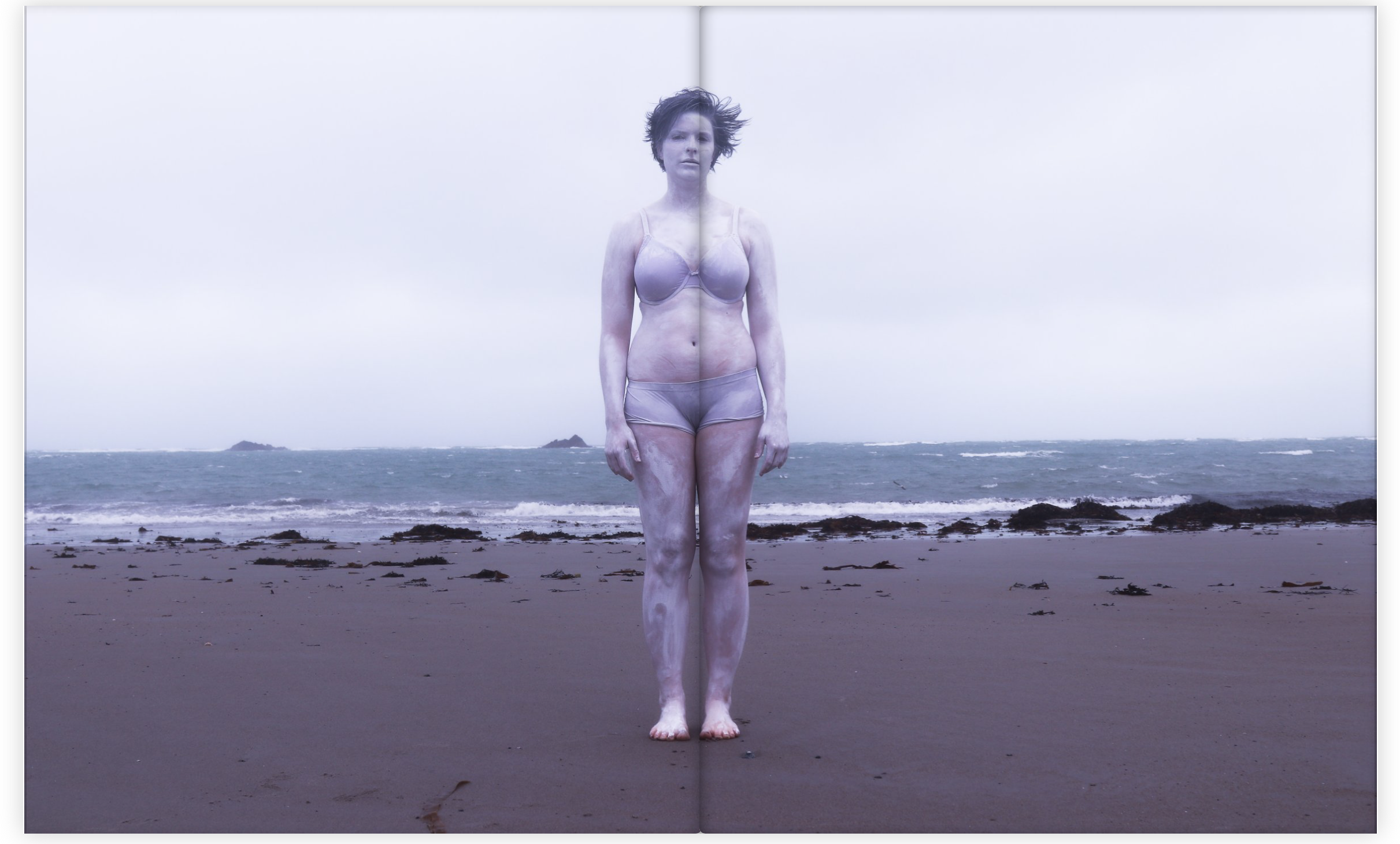

Link to my photobook Inside Out
My body image project is about capturing a physical representation of hidden emotions. My book “Inside Out” includes images of subjects posing in a certain way that represents a specific emotion such as pain or happiness. The title Inside Out, concludes what the series is about in a very simple way. The book contains images where I’ve focused on particular body parts, such as the face or the hands. I’ve captured them in a creative way where the shapes and movement that they create represent certain emotions. The book contains a certain aesthetic that flows throughout. It has a very contemporary feel because of the way of using the human body and also the use of the bright colours and abstract visions. The book contains a variation of sizes of images, ranging from half page images to full page spreads. I decided to use a portrait orientation for the book because it was the best way to display my images. Although I didn’t want to categories my images into different sections of the book, I also didn’t want a completely random structure and sequencing. I therefore displayed images together that linked in some way, to do with colour or subject.
Read more on her BLOG
In her exam project Anna produced another photo book, Wabi Sabi.


My book Wabi Sabi is about the freedom of viewing the world in our own unique way. Its about capturing the insignificant details that we would usually ignore or not notice, and appreciating the pure and spiritual elements of the imperfect details of our lives. The Japanese term, Wabi Sabi fully explains what the series is about in a simple way. The definition of the term, “a way of living that focuses on finding beauty within the imperfections of life and accepting peacefully the natural cycle of growth and decay” concludes the project well. Throughout the book I focus closely on the tiny details of objects and scenes that we witness all the time. An example of scenes that I’ve included is the Sky at evening time, and the movement of the sea. Within these scenes Ive focused on and framed particular elements that interested me. My aim was to fragment specific details that were insignificant yet beautiful.
Read more on her BLOG to learn about her research and experimentation
Peter Le Gal: Baptism


Link to my Book: Baptism
The exam brief was to create photos around the words Freedom and Limitations. I made a book with the name Baptism. The reason for this is because when a person is baptized it is a symbolic representation of what God has done in their life. In this we believe God has washed away the old life and this person has started a new life with god. ‘Old’ and ‘New’ are keys words in the context of my book. By using software I was able to change the original colors and intensify them. Giving these photos New Life with New Colors.
Previously I have been studying the spiritual link between color and the soul. I read the book ‘Concerning the Spiritual in Art’ by Wassily Kandinsky, in this he writes about how certain colors can effect human emotions differently. I wanted this to be the case with my book. Baptism is a very spiritual thing and I found calling my book that linked everything together nicely. When a person is baptized the person has the Freedom to start over to begin a new life. Before these photos were Limited by the colors that they were captured in. But I have given these photos the Freedom to change, to be something new, with new colors that effect the soul differently to when the photos were initially taken.
Read more on his BLOG
Jude Luce: All My Love



link to my photobook, All My Love
My plan for my photo book is to produce a detailed and insightful exploration into my family life, with me centered within the middle. This is the running theme throughout and I hope to show it through poetic, still images of landscapes or objects which may have no direct meaning at its face value but has a deeper meaning once inferred. As well, the portraits in my project are intended to be collaborative and intimate to show the relationships I hold with the people in my life but the portraits are intended to show the emotion of each being as well. I have contrasted yet shown the similarities of my mum and dad’s relationship when they were together to that of my relationship with Lucy now and the overall look I hope to achieve is that of a fun, vibrant, light-hearted but quite solemn and sombre image-based diary about how I am still developing through the events if life and the attachments I have built from the event which shaped my life – my mum and dad’s divorce. I want their to be an obvious existence of the theme of attachment but also an underlying theme of detachment. Although these themes are the main focus for my book, they are underlying themes which are subtly hinted at every now and then by a sequence which develops upon the understanding of love. Memory is fragile and I use this notion as a driving force for my project made up of diaristic photographs, which, when come together, create an album of moments in time which in-turn lend themselves to never be forgotten. I have attempted not to avoid the subject of my mum and dad’s divorce but felt it easier to express this and my feelings towards it through other subject matter, being my relationship with my girlfriend and the other people in my life, such as my individual relationships with my mum and dad and how I view them in solitary opposition to one another.
Read more on Jude’s BLOG
Zoe Pannenborg: A State of Contentment



LINK TO PHOTOBOOK – ‘A STATE OF CONTENTMENT’
I decided the title of my book ‘ A State of Contentment’ when i was actually in Burkina Faso completely submerged in the situation that i was in. The idea came to me when we were on the building site discussing the local community and thinking of all the things we are grateful for that we were getting to go home to. It was evident to us that we would only be in Africa living a minimalist life for a few weeks whereas the reality for the local community was that they would be experiencing this hardship for the most of their lives. Although this seems like a harsh thought we had all noticed that even though the community had so little they were utterly content with what they had and i said during this discussion that it seemed as though they were in a state of contentment, because the community truly were in a state of peaceful happiness. I put the title and my name on the cover so that the writing did not take away from the cover image.
Read Zoe’s BLOG
Jasmin Ross: Handle With Care
I have made a book which is called Handle With Care, it is about the history of St Saviours hospital from when it first opened in 1869 to when it closed. The layout of the book starts from the outside, goes inside then, then you meet 3 patients, it stays inside then it goes outside again to finish the book. My book is 108 pages and it has a combination of text, double page spreads and single image pages. My book is split into two parts of Archival material which was the basis of my work which i went a collected and photographed then next part is of my own images which i made of the outside of the abandoned building.
Read more here on her BLOG


Rosanna Armstrong: His Master’s Voice
Overall I have found my personal study project very interesting. Assisting with the wider project in collaboration with the Société Jersiaise Photographic Archive and National Trust has meant that I have been involved with research and discoveries as well as having access to exciting photographic opportunities. I was originally introduced to the collection of Francis Foot’s photographs in October last year while interring at the SJ Photographic Archive and since then have been involved in a lot of work developing a project around it in connection to the building restorations. I started by researching the family and history of the buildings and familiarising myself with the collection by updating the database. One of the most interesting areas of my project was actually visiting the buildings while they were in the process of being restored. This allowed me to connect the knowledge of the past to the present and explore the idea of preserving built heritage in connection to the historical photographic aspect. This relates to my interest in local history and the development of photography as an art form. Having knowledge of the past inhabitants reflects the human side of buildings and memories and traces associated with them. Some of the small details such as the image found behind the mirror and writing on the walls were particularly striking examples of this. It has also been interesting to explore family portraiture throughout time and conduct various shoots with my own family including one specifically connected to the Foot Shops.
Read more here on her BLOG

Link to her book: His Master’s Voice
Nina Powell: Jersey Folklore
Beliefs and superstitions revolving around mythical characters in Jersey, Channel Island are common. The ancient lanes overhung with vegetation look almost like dark tunnels leading into the unknown. Unexplained ruins dotted around the coast add to the air of mystery and Island people with a long and proud history have many stories to tell which have been passed down from generation to generation. In this photo book I have explored three of Jerseys most famous and well-known legends, portraying each one with a series of environmental portraits, studio shots and landscape photographs. The first legend tells the story of the poor Bride of Waterworks Valley, the second shows the demonic presence down at Devil’s Hole and the third looks into the many tales of Witchcraft in Jersey. This project is my response to the provided themes of ‘truth, fantasy and fiction’, as well as the beautiful depictions of myths created by other photographers. My aim for this photo book was to recreate some of our islands most interesting history using beautiful and insightful visuals. By doing this I hope to bring these legends back to life in this colourful yet ominous series.
Read more here on her BLOG


Link to her book: Jersey Folklore
Cerian Mason: Untitled
I produce a large amount of documentary style images revolving around the more shadowed teenage social life. This involves being in a lot of places we shouldn’t be, drinking too much and probably a little more nudity that this blog is ready for. Below is a selection of my project work over the last few weeks presenting a range of locations – from abandoned hotels to out of hours nightclubs – featuring my friends being strange and causing trouble. There are some clear trends in the image I create such as the selective palettes and tight range of colours and the positioning of characters – these images were not directed at all though the figures were of course aware I was photographing them. This photobook was made using bookwright software and will be printed as a portrait A4 project. Many of the design ideas for this projects are inspired from artists and graphic designers I have studied over the last two years such as Lotta Nieminen. Studying the graphic designer’s personal projects. I took particular notice of the image layouts and use of overlapping text. There is a carefully controlled colour palette and minimalistic design which aids the presentation of images in such a publication. Benjamin Koh’s project work again has a strong graphic theme which uses a muted colour palette to emphasize the continued sense of photographic narrative. His pages tend to be uncluttered and minimal which draws attention to the graphic images in each of the carefully constructed double-page spreads. These elements were crucial to my own work, ensuring that images would be easily visible and clearly presented.
Read more here on her BLOG


Link to her book: Untitled
Max Hillman: The Getaway
There is a consistency of monochrome tones and grainy, heavy contrasted images. Throughout my project I have looked at documentary photographers such as Larry Clark and Jacob Sobol, and upon reviewing their work i have grown a love for their styles. The layout and the order of the images is important as the book needs to flow, almost the same way a story does. I need to find similar groups of images and order them carefully one by one so the book feels as if it has a narrative. I started with a small, shadow filled image of my face as the book is about my teenage life with friends. I followed this by a double sided silhouette of a friend in the school car park leaning up against a car. I wanted to start the book of with images based around friends and our utilisation of cars. These next pages were organised to follow the theme around cars, starting with another image of friends in the school car park between lessons, leading to images in cars at night time.
Read more here on his BLOG



Link to his book: The Getaway
Gio Rios: Home Sweet Home?
In terms of my title, I called my book ‘home sweet home?’. This is of course a common household saying, that I have added a question mark to. Due to the fact that my home life is fairly broken and has been on and off my entire life, which makes it far from ‘sweet’. On the first page within my book I write the quote ‘family means no one gets left behind or forgotten’. This is controversial from the start, as my farther had done exactly this from my birth, which is ultimately what stems my thoughts and feelings towards a lot of my family life and the reasons for the decisions made within this book.
Read more here on his BLOG

Here I feature a stand alone image of an ultrasound of me. This is used to imply that I am the center of this book and that this is my own representation. The inclusion of juxtaposing images, put alongside one another, help to emphasise my emotions towards certain characters within my book.

My granddad is someone who has consistently been in and out of my life, throughout my upbringing. Therefore I feature him alongside a set of spiraling stairs to imply that he has spiraled out of my life.

Link to his book: Home Sweet Home?
Rochelle Merhet: Ryan
The first step I took to my project inspired by the work of the artists I have studied and discussed was look at my own archived family photographs. I have a huge selection taken by my parents featuring me and my brother, many appeared very informal depicting me and my brother playing and laughing at each other, which gave the ability to see the relationship between me and my brother and how it has developed. Much like any family album, these photographs share a very personal importance to me. I wanted to use photographs that depicted who I was as well as my brother in my book as a way of a candid reflection of what my childhood was like and how I felt about it. Similar to the work of Carolle Benitah I wanted to make physical alterations to the photographs to further explore the notion of nostalgia, memories and the relationships between family members, in particular between me and my brother. I wanted use their project as a way to further understand myself through the use of memories and photographs to build and develop and understanding of who me and my brother are today and in particular our differences which are created from the notion of ‘nature and nurture’.
Read more here on her BLOG




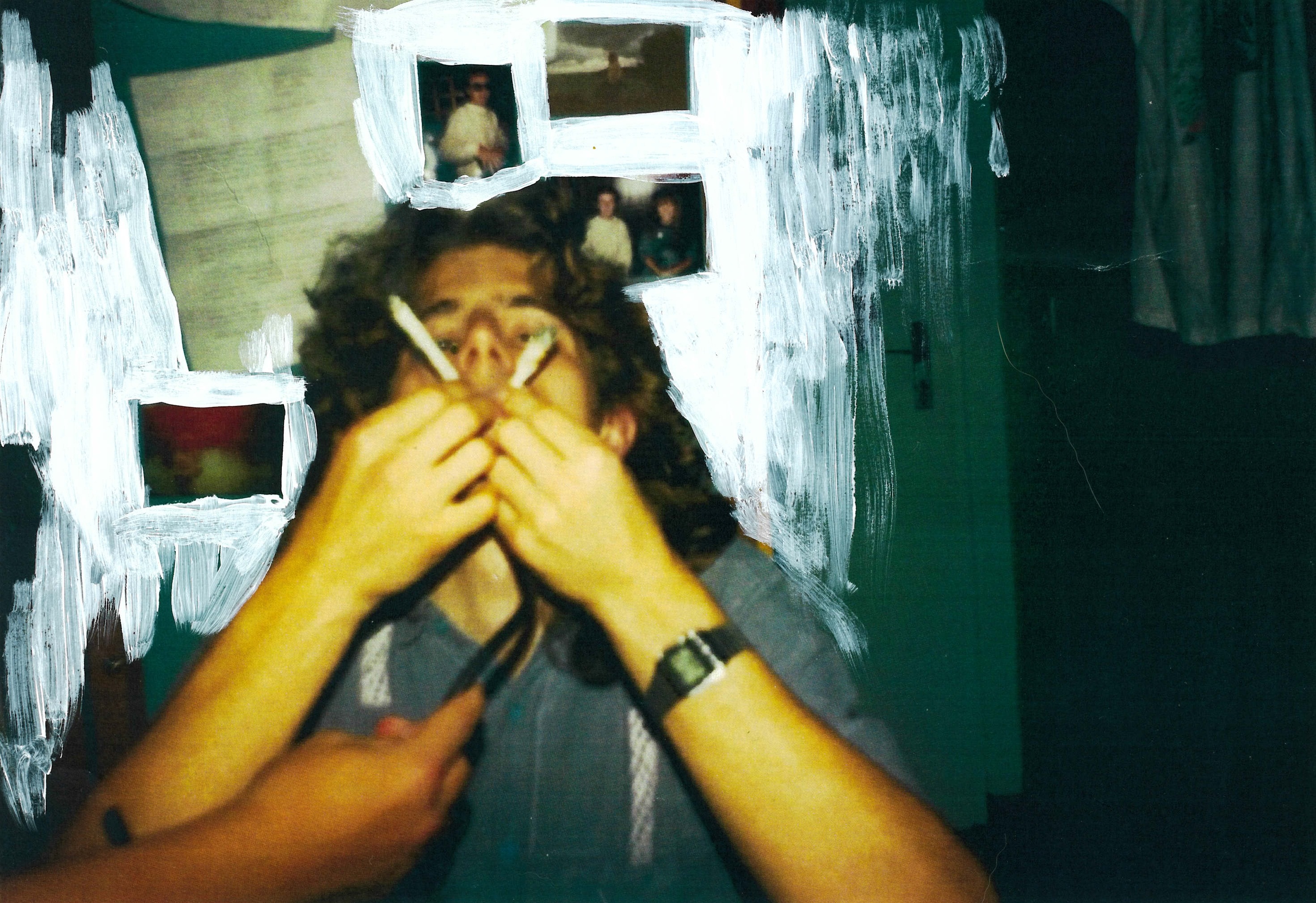

Link to her book: Ryan
Matthew Knapman: Is that My Blue Butterfly?
The research of both these artists informed and influenced my personal project, which focused on the life of my mother who is currently diagnosed with metastatic breast cancer. She was originally diagnosed with breast cancer in Easter 2014, but when the cancer has spread to other parts of the body, it is called metastatic cancer. The liver, lungs, lymph nodes, and bones are common areas of spread of metastasis. Using art and physical materials, I wanted to draw into and edit the photographs I take in order to illustrate my emotions and what my mother is going through. The physical art would be a visual guide to the audience, telling a story regarding the illness. This is something that I was excited to do, given my passion and abilities in art and design. I can draw, scratch or edit the photograph using chemicals and other kinds of destructive methods. This can demonstrate some kind of investigation into the relationship between traditional art and Photography as mediums. This is something that I touched upon for my AS project.
Read more here on his BLOG







Link to his book: Is That My Blue Butterfly?
Christianna Knight: Women of Yesterday
During my personal study I enjoyed having freedom to explore my own ideas and take inspiration from artists and photographers that I am interested in. I was very inspired by Cindy Sherman’s work, I wanted to explore themes such as masquerade, costumes and stereotypes which are very present in Sherman’s studio portraits. When first collecting ideas as to what I should base my project on I decided I wanted to explore female stereotypes through costume and studio portraits. However, with so many stereotypes existing within my gender I decided to create a series of portraits depicting stereotypes from each decade of the 20th Century. As I was born in 1998, I was looking at these stereotypes with a retrospective. I also kept feminist theory in mind, relating my stereotypes to important movements in feminist history including the three main waves as well as smaller social victories for women. I felt that this project was very successful and that each decade was well planned and executed and that the nine image work well as a series.

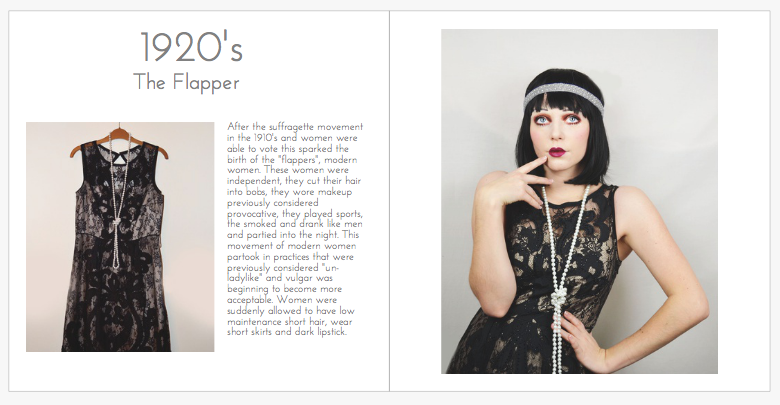



Read more here on her BLOG
Max Le Feuvre: Untitled
My photo-book is based around my Grandfather. He died 30 years ago and so I never got the chance to meet him. I wanted therefore to find out more about him and develop an understanding of what he may have been like if I had got to know him. This project was therefore very much about exploring and investigating the theme of absence, a story based around someone who is no directly part of it. I photographed off and on for 9 months to create this project, re-tracing my Grandfather’s steps and using photography to express my findings. Archival resources in particular have played a huge part in my project, especially through the access I have had from the Société Jersiaise Photographic Archives, and the resources I have found play as much a part in this story as does my own responses. I wanted to make my images and narrative feel as simplistic and personal as possible and so I constructed my photo-book by hand, I style I believe gives my work a quirky, old-fashioned feel.
Read more here on his blog:
https://hautlieucreative.co.uk/photo16a2/author/mlefeuvre05/
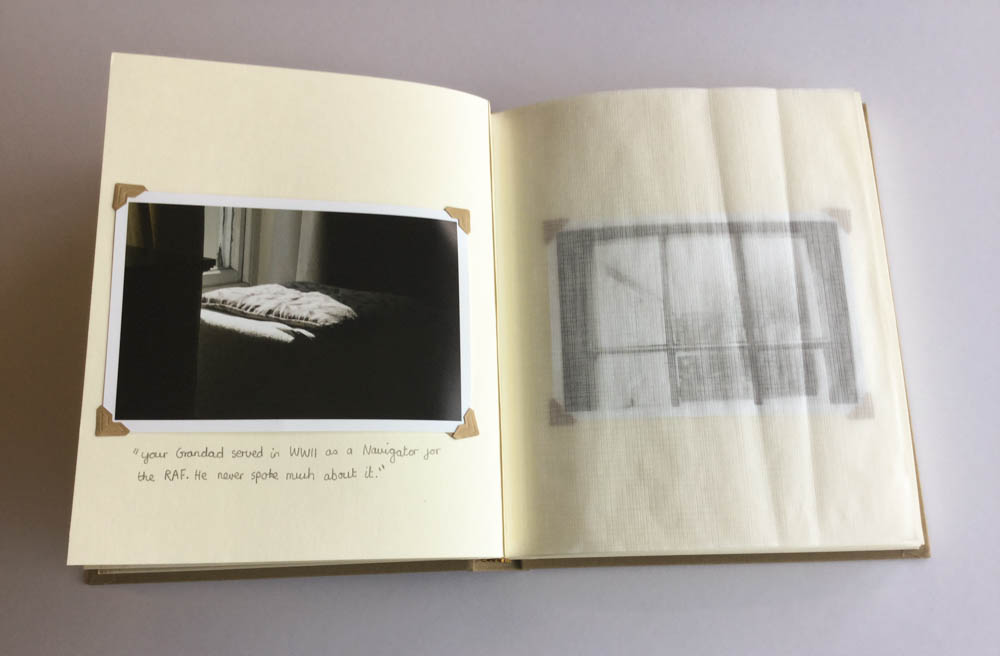
Shannon O’Donnell: Shrinking Violet
Shrinking Violet stemmed from a short film that I created as part of my project of my mother. I made a film based around an interview that I did with my mum and made it up of archival images as well as documenting her everyday life. Part of the interview sparked my interest when she said ‘I’m not one of those shrinking violets in the work place’. This caught my attention as I see her role as simply doing what is expected of her, something that I want to challenge through my photographic work. This brought on the idea for creating a parody shoot where I dress as a persona, similar to my mum, and pose around the house mimicking the role I see my mum portray. I wanted this photo book to embody the traditional role of women our society perceives and for spectators to view the images I have created to recognise themselves, their mothers, their sisters and their wives. Gender defines everyone and, at times, can be limiting. It makes us feel that we need to belong and conform to the expectations placed on us at birth solely on whether we were born male or female.
Explore research, ideas, experimentation on the her blog:
https://hautlieucreative.co.uk/photo16a2/author/sodonnell05/
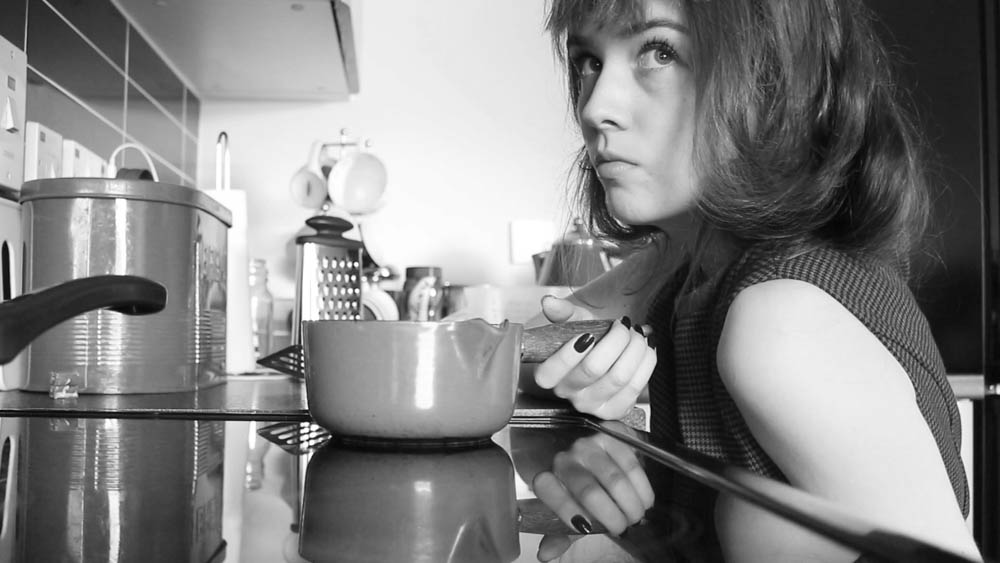
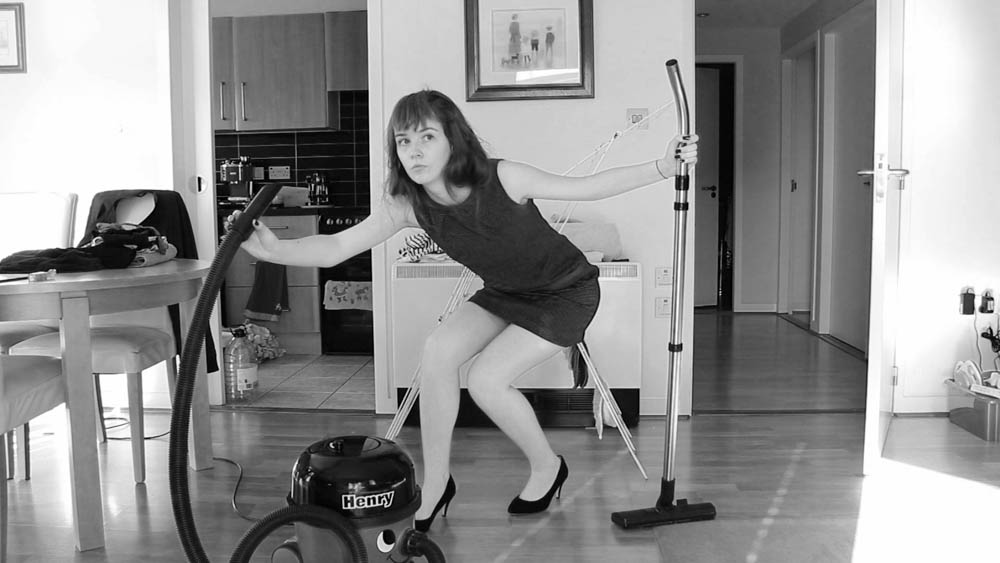
Watch her film below about feminism, her mother and her role in the family. This film was the starting point for her photographs above by re-staging herself as a domisticated female
link to her photo book: Shrinking Violet

Jemma Hosegood: The Memory Box
“Good friends make you face the truth about yourself and you do the same for them, as painful, or as pleasurable, as the truth may be.” – Corinne Day
An autobiography is an account of the life of a person written by that person. In other words, it is the story that a person wrote about themselves. My inspiration for this study came from memories that are forgotten, and the ‘things’ that re-jog our brains to remember them. These could be objects from a childhood collection box or a set of images from a blurry holiday. For this piece of work I attempted to join two ways of memory revival into a book as well as a layout presenting some of my final images.
Read her blog:
https://hautlieucreative.co.uk/photo16a2/author/jhosegood05/

Link to her photo book: Memory Box
Hayli Ducker: My Bones Hurt
I took huge inspiration from photographers such as Thilde Jensen, Jo Spence and Francesca Woodman, these three photographers all explored their illnesses through photography which I thought would help me come to accept my diagnosis. As Jo Spence explained, photography can be used as therapy, “literally using photography to heal ourselves.” Through taking these photographs to document my illness like a diary I came to terms with it and learnt to adapt and slowly started to be able to have a normal life again just at a slower pace than before. For me this was a difficult subject matter to explore as I try and keep it rather private, friends know about it but I try to keep it private from classmates and the general public. I don’t want people to look at me differently and I found I felt rather vulnerable exposing the one thing I do my best to hide.
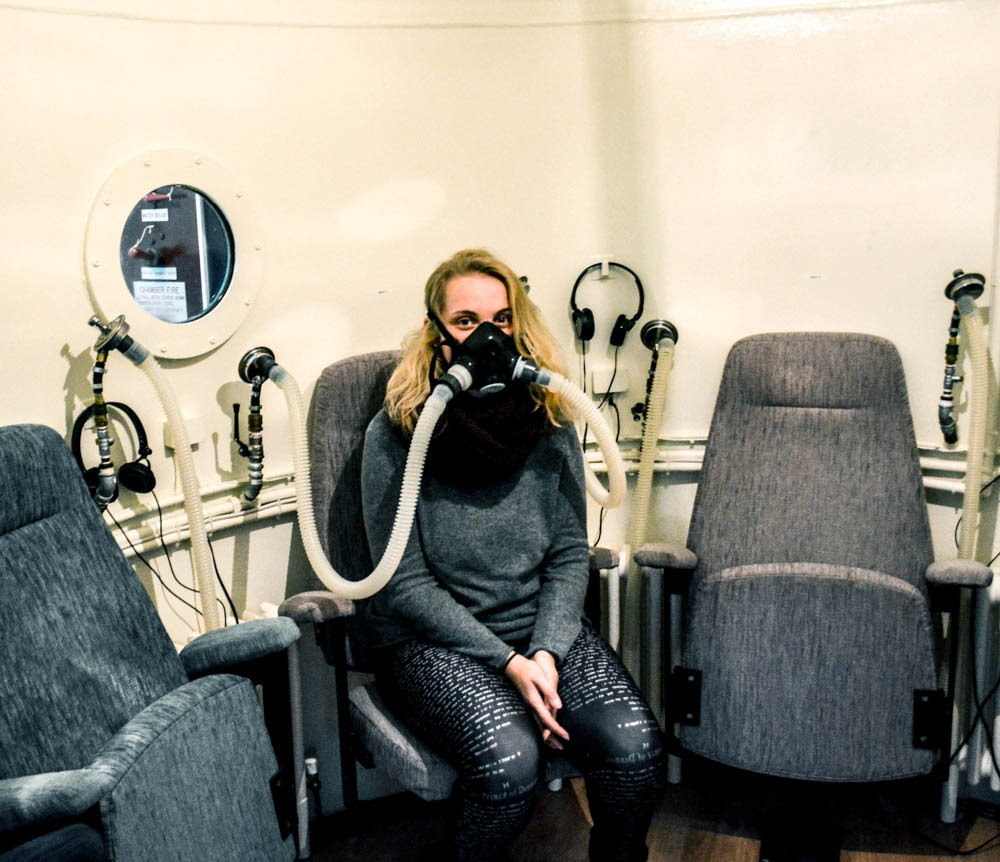
Link to her blog:
https://hautlieucreative.co.uk/photo16a2/author/ckeene05/
Jessica Freire: Domestic
My personal study is about my mother who immigrated to Jersey in 1987, from a disadvantaged background in the hopes of having a better life. My mother is the eldest child of six, who grow up in a village called Machico on the south east side of the Island of Madeira. After leaving school at the age of 9 to work on the land to provide for her family, she developed a hard working discipline. Currently, she is the breadwinner within my family working in five different jobs all within the domestic area. In my personal study I am exploring how my mum’s role as a breadwinner abdicates from her culture and stereotypical role within a household.
Link to her book Domestic

Explore research, ideas, experimentation on the her blog:
https://hautlieucreative.co.uk/photo16a2/author/jfreire05/
Sian Cumming: The Butler
As a photographer, it is important for me to express details about my life to almost create a biography through photographs. I chose to use my dad for my project as his job has impacted my life since day 1. My dad is the Butler for the Lieutenant Governor of Jersey and has enabled me to have an insight into the life of royalty. My dad’s responsibilities are; ensuring the house events run smoothly, he also manages the house staff and liaises with his Excellency and Lady Mc Cole for all their requirements. I have lived in the grounds of Government House all my life and have truly honoured living here. Our tight community has really impacted my life and the way I am, as I also work as a waitress for Government House functions, I have been taught the type of service required for the Governor and his guests by my Dad himself. It was an honour to follow the footsteps of my dad and what he does at work and for the Governor to allow me take photographs of him off duty was a privilege in itself. To me, family is the most important aspect in life, it’s the root to our personality. Family is the single most important influence in a child’s life. From your first moments of life, you depend on parents and family to protect and provide for your needs. They form your first relationships with other people and are your role models throughout life. Researching into the way different photographs express the notion of home was truly inspiring and made me want to produce something that shows how my life has been

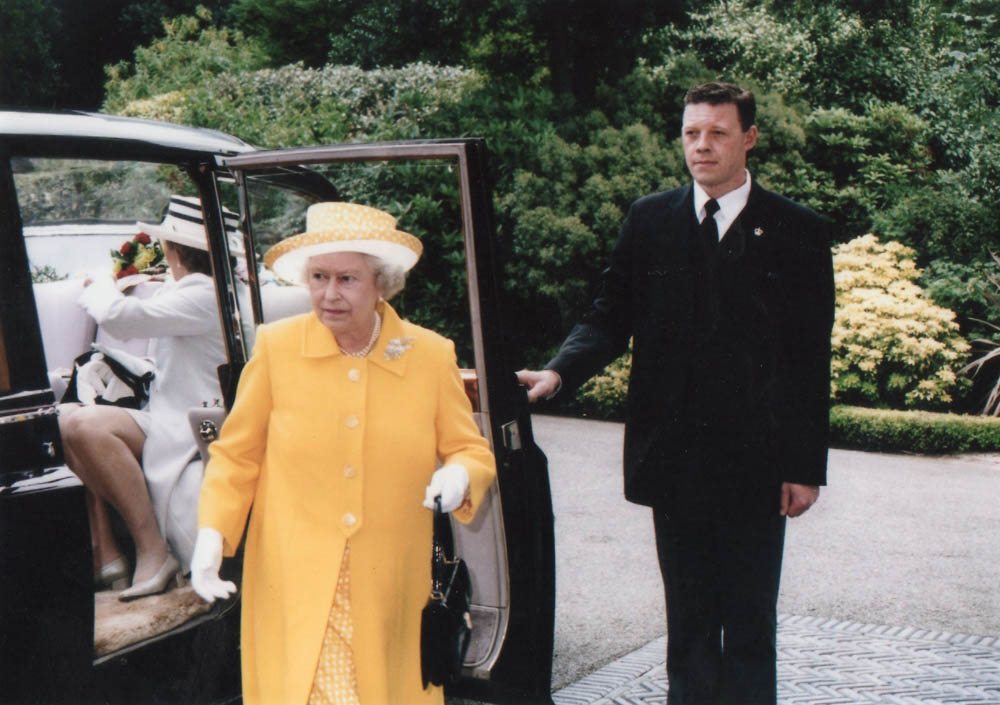
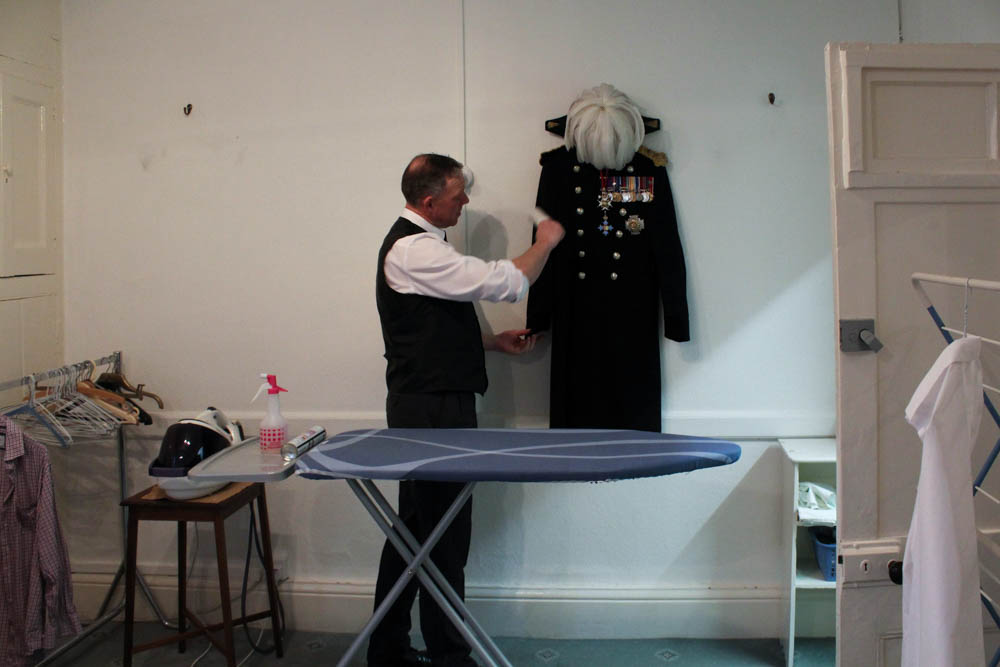
Link to her book: The Butler
Link to her blog
https://hautlieucreative.co.uk/photo16a2/author/scumming05/
Viviana Maia: Destruction is Creation
I created this photographic book called “Creation Is Destruction” as an outlet to show how not everything we see is the truth. As part of our exam project, I decided to focus on the theme of truth to be able to have a chance of telling my own version of events that have occurred throughout my life. The main theme of my photo book is the sense that when you destroy something, you forget that you are always creating something new. I used that notion to therefore allow myself to create a whole new truth about who I am, where I came from and what it all means to me. I decided to use archival images from when I was a child as well as images taken from family photo albums which I then digitalised and this is when I began my destruction process. I ripped up, stitched together, erased people and added people to my photographs to create a new truth and a new sense of reality that, at that time I still had no idea what it was going to be until I left everything I grew up with behind and started a whole new life in a completely different place.

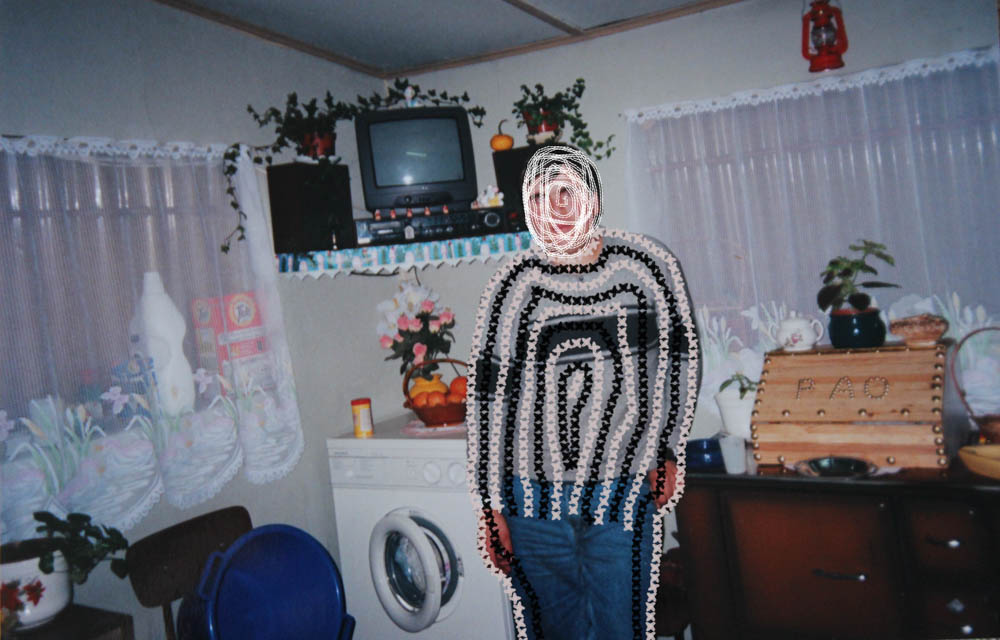
Link to her blog
https://hautlieucreative.co.uk/photo16a2e/author/vmaia05/

Holly Benning: Three Chapters
I have explored how the invisible can be captured and portrayed through the medium of photography. And why memories hold such a powerful influence over our past, present and future. I have looked at what makes a photograph meaningful, what gives a photograph reality and how through photography the memory of a person can live on. My project focused on exploring the invisible through three female generation’s memories; this included my grandmother, my mother and myself. These distinctive viewpoints enabled my project to become more personal and really seek the depths of my grandfather’s life. I think memory is more than simply remembering a once present thought, but it is about connecting with the past in order for it to live on. We are made up of fragmented memories and forgotten dreams. Our entirety rests in the fate of old letters, burnt photographs and meaningless possessions. We never question the invisible, it is as though we are on a relentless pursuit to try and capture what we cannot see. We abide by the rules and limitations that are enforced by the concept of death. But what happens to those who become untouchable, those who are no longer part of the flux. Their existence becomes empty and lost; they are no longer perceptible to the eye. We yearn to cherish the ‘good’ memories and except the restrictions we are faced with, regarding mortality. In doing so, the feeling of life is created; the tangibility of pleasure and pain enters our worlds and consumes us. But, photographs hold heritage and meaning, they have a depth of knowledge and feeling to them.
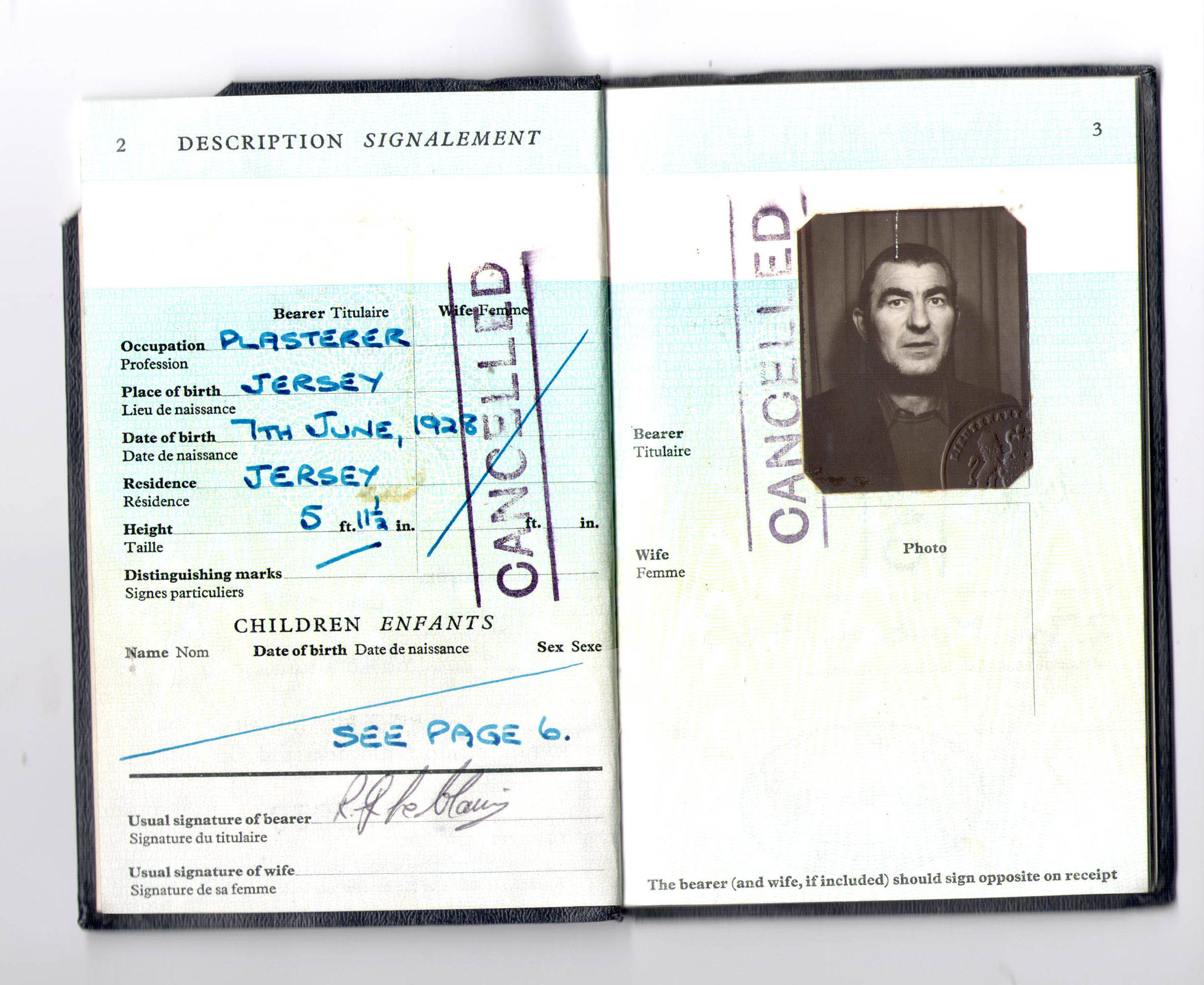

Link to her blog:
https://hautlieucreative.co.uk/photo16a2/author/hbenning05/
Personal Study | 2015-16
Bryony Sanderson: Gie us a wee word wi’ yer Mum:
The title of this work is phrase I would hear both my Scottish Grandparents say almost every time I answered the phone. During this project, I focused on my Scottish Heritage and the difficultly living in Jersey has bought to our relationship with my Grandparents.
Bryony’s exam project: Artificial
Being surrounded and fascinated in the prosthetic world through my parents’ occupation, I felt that this to be an appropriate area to explore under the theme flaws and imperfections. From the moment the idea sprung to mind, I knew this was going to be a challenge, being well aware it would push my abilities as an amateur photographer. However, I was firm in my decision to pursue this, making it my goal to depict the power, strength and determination of amputees, and how in-fact, their ‘imperfection’ or ‘flaw’ as some would call it, is certainly not a flaw at all. Stuart Penn, the focus of my photographs, was such a pleasure to work and a huge inspiration, giving us the powerful message that anything really is possible. I feel honoured to have had the opportunity of taking his photographs and gaining insight into his incredible lifestyle.
Eve Ozouf A Lekker Christmas
For this project I captured the highlights of my family holiday to Durban, South Africa for Christmas 2014. The images were captured in a documentary style, which is my preferred approach as I enjoy capturing family life as well as landscapes where human activity has occurred. The word ‘Lekker’ which I used to describe my Christmas means ‘good’ in the native language of Afrikaans. My photographs show a variety of environments that South Africa has to offer with its vast land including urban built up areas to the deserted African plains. Some images show the ‘Durbanite’ way of life, including where my 14-year-old cousin demonstrates how to use my grandfather’s rifle to shoot the annoyingly noisy ‘Hadeda’ birds. South Africa is full of vibrant colours and textures which I particularly focused on when producing this body of work as a photograph isn’t just about how it looks, it’s how you imagine it feeling. A lot of experimentation was used to bring out different styles of photography including slow shutter speeds to dramatise events such as the bonfire sprites floating towards the sky. For me, these images capture the quality of life South Africa has to offer and should make the viewers want to visit this beautiful country for themselves.
Oliver Sharman You’s Company, Me’s a Crowd is a photo book in an autobiographical form, whereby I am re-enacting events that occurred in my recent life, venturing from visiting my brother at university and the hungover pain this brough, to partying and hanging out with friends in all manner of ways and the aftermath of this. So, here is an insight into me, often eventful life of a teen in the island of Jersey.
Matt Palmer: I Need A Shovel is the story of my Granddad, the house he has lived in since the 1960s and the clearing out of the house as it is now need to be sold. The name of this project came from my Dad. Him and a couple of others when ahead to my Granddad’s house whilst I went with my Aunt to pick my Granddad up. My Dad had the job of removing the upstairs toilet, which, when it stopped working, my Granddad kept on using it until it overflowed. When my Aunt and I arrived the first thing my Dad said to his sister was ‘I Need A Shovel.’ We all found that line funny when we heard it and then that line just stuck with me.
Lots of people can see little bits of themselves when they see my granddad’s hoarding, be it from collecting newspapers, or postcards, or whatever they’ve collected, it can all be related to what my Granddad has done over the past 50 years.
It is a growing problem. The family need to sell the house as the people next door want to buy the house, however, my Granddad doesn’t want anything to go or be moved. I feel that this could be happening to lots of people across not just the UK but the world. This project will speak to lots of families who are facing the same problem.
Matt Palmer: A Little Bit Longer: Not all disabilities are visible. You could know some your whole life and never know that they have a severe, life-long condition. On Tuesday 14th July 2009, I was diagnosed with an invisible illness; Diabetes Mellitus Type 1, a condition when the pancreas in the body loses the ability to produce insulin independently. Day to day, my life hasn’t changed; however, I have to inject myself four times a day, and manually balance my sugar levels for the rest of my life.
As diabetes is something you cannot see, it was very hard to photograph it. I took inspiration from Elinor Carucci, an Israeli-American photographer who photographed herself with her children from when she was pregnant, through the birth to her children growing up. Her work involves very revealing, close-up self-portraits to capture her emotions. I found this style to be inspiring in capturing one’s self, and adopted this style into my own.
This is the first time I have ever turned the camera on myself. You would think it would be hard, however, it was just like I was being a model for someone else, and since I’m very open, talking about my diabetes, I found it easy to show my emotions. Photographing events from having low blood sugar level in the middle of the night, to a regular check-up at the diabetes Centre, to an eye-screening at the hospital, and the different physiological outcomes I had to injure, all within one week.
Tom Rolls: Angel; The Perfect being? With this work, I am exploring Angels in relation to the project brief “Perfection/Imperfection” which I chose as part of my A2 final Photography exam. Throughout the project, my aim was to rekindle an idea of the Angelic being in relation to different people’s perceptions; for faith, protection, happiness, balance etc. I spoke with a number of different people about their definition of an Angel and what it meant to them.
I interviewed my local church vicar who gave me a very brought insight into angels in both a religious and personal sense. I came away bewildered at the fact that Angels are a very important part of people’s lives, and realised that there is a whole other dimension to the subject. Having researched and gained enough primary knowledge, I began transforming these different perceptions into my own interpretations and pieced together a visual binding of all the ways in which an Angel spoke to me through others. I made a film which documents my journey in the sense of exploring what angels actually symbolise today, and how its image and meaning has changed over time. I hope you will also find this a journey for yourself and come away reflecting on this inner dimension from your own personal viewpoint. Are angels in fact the perfect being, or is it in fact their imperfections which make them so sacred?
PHOTOGRAPHY AND TRUTH
Week 10: 12 – 19 Nov
CONTEXTUAL STUDIES
Photography and Truth
Can a photograph lie?

Are all photographs reliable?
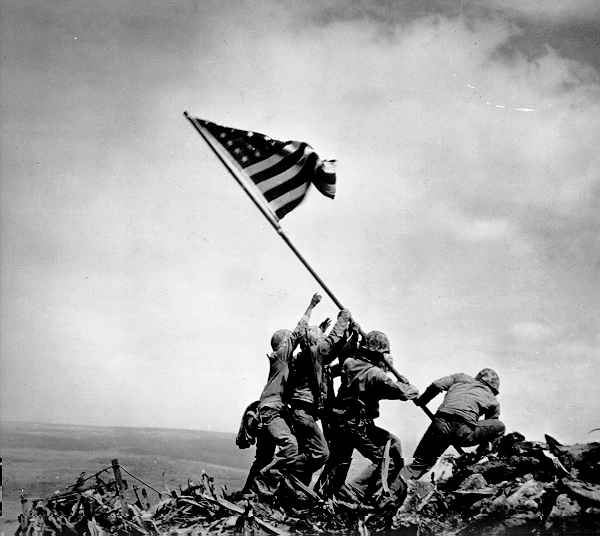
A photograph is a certain delivery of facts?
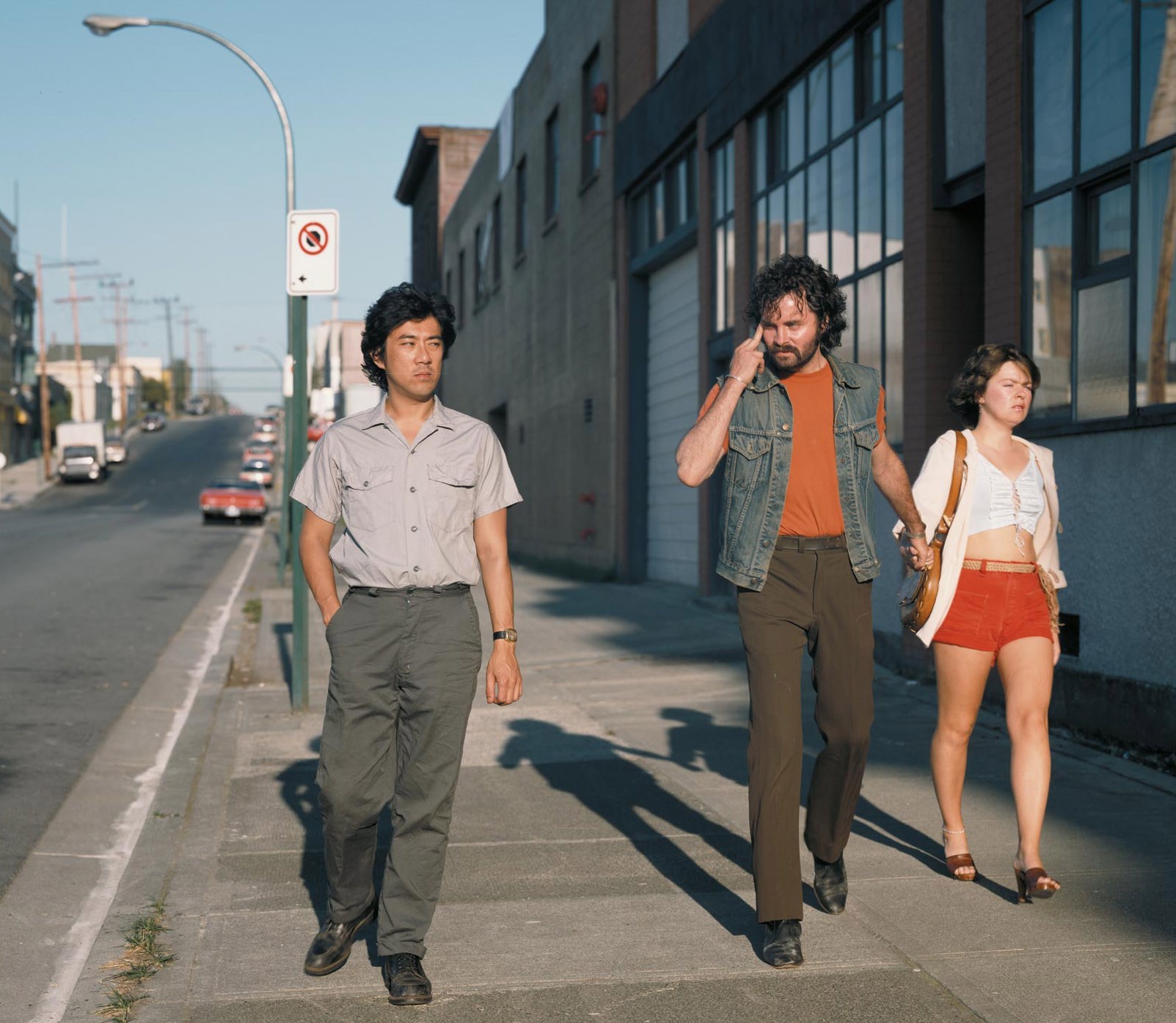
Claims of truth that most people take for granted?

You often hear a photographer saying: ‘the camera was there and recorded what I saw’.
A common phrase is to ‘shed light on a situation’ meaning to find out the truth.
‘A picture tells a 1000 words‘, is another aphorism that imply images are more reliable.
Picasso famously said: ‘We all know that art is not truth. Art is a lie that makes us realise truth.’
Magritte’s painting La Trahison des Images in which he painted a picture of a pipe with the words ‘Ceci n’est pas une pipe’ (This is not a pipe) goes some way towards an explanation.

Documentary photography’s central aesthetic, political and moral associations are:
depicting truth
recording life as it is
camera as a witness.
TASKS: Produce a number of blog posts that show evidence of the following
DEADLINE: Mon 19 Nov
1. ANALYSIS: Choose one image from case studies listed below that questions the notion of truth regarding the photographic image and its relationship with reality and explain why.
Follow this method of analysis:
TECHNICAL > VISUAL > CONTEXTUAL > CONCEPTUAL.
Read more here on PhotoPedagogy

2. PHOTO-ASSIGNMENT: Based on your chosen theme of Political Landscape make two images, one that you consider truthful and one that is not.
The rationale behind this task is for you to consider the nature of the photograph to be a true representation of reality. In order to complete the tasks successfully, you must read and look through supporting material and consider the bullit points too that may prompt you in your answers . It is important that you do thourough research and use direct quotes and reference from sources included below
RESEARCH: Look through this Powerpoints: Photography and Truth and also read also this text for further context: Issues in Photojournalism.
For a contemporary perspective on documentary practice read photographer, Max Pincher’s Interview: On Speculative Documentary To read this interview you must access it online from home as it is blocked the internet filter in school.
Documentary photography is based on assumptions that the photograph represents a one-to-one correspondence with reality, which is nearly accurate and adequate, and that the photographic image is capable of conveying information objectively.
Consider these points when you analyse your image
- Traditional documentary believes the viewer to be a receptive subject taking in the objective information of the world through the photograph
- Can we rely on its ability to capture a moment in time accurately as historical evidence or as a witness to the world?
- Postmodernism points out that all forms of representation is subjective? How? Why?
- Digital photography has made manipulation much easier?
READING: Background and context of the historical, conceptual and aesthetic approaches and differences between documentary practice and tableaux photography.
David Bate (2016), Art Photography. Tate Publishing
New approaches to documentary in contemporary photography
David_Bate_The_Art_of_the_Document
On rise of Tableaux in contemporary photographic practice David_Bate_The_Pictorial_Turn
Also read and look through both these PPTs to get a basic understanding of Documentary vs Tableuax
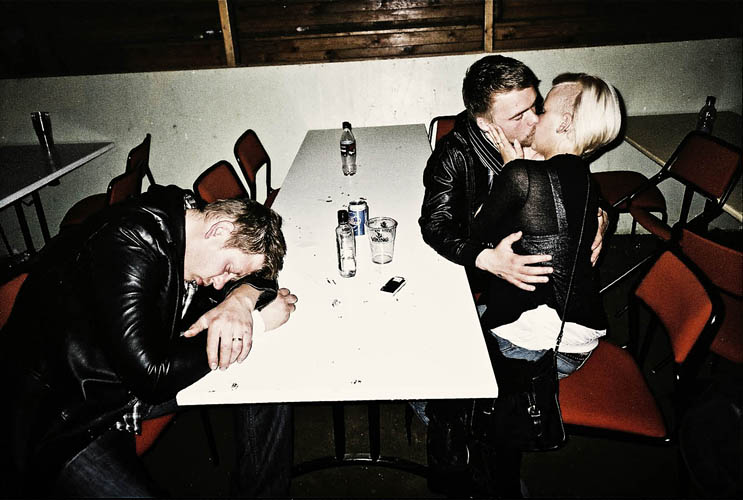
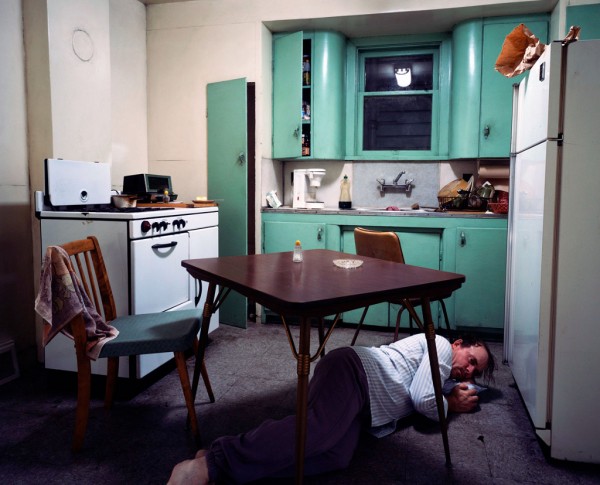
CASE STUDY 1:. In the terrorist attacks in Brussels in 2016 Fox News was reporting from the Place de la Borse. Video footage shows a young photographer posing a woman in front of a makeshift memorial: is it bad journalism ethics, or just the way it’s done?
Read the Guardian newspaper article here and make a blog post that expresses your own thoughts and views.
Further insight can be read here on Petapixel
Here is the image that photographer, Khaled Al Sabbah posted on Instagram
CASE STUDY 2: Another image from the Brussels attack has also generated a lot of chatter on social media.
A photograph of a woman in shock with torn clothes and injured foot has gone around the world.
Read a few articles here.
Following the second explosion, Kardava (the woman who took the image on her phone) fought her urge to run to a safe place. “I also wanted to take pictures. As a journalist, it was my duty to take these photos and show the world what was going on. I knew I was the only one at this spot.”

Is there a moral dilemma in photographing people injured or dying? As photojournalist should you take the image?
What is your view? How has this image become iconic of the terrorist attacks in Brussels airport?
CASE STUDY 3: Using another news images as an example, such as the drowned Syrian boy (read article here), consider if photographs can change the world or change people’s perception?
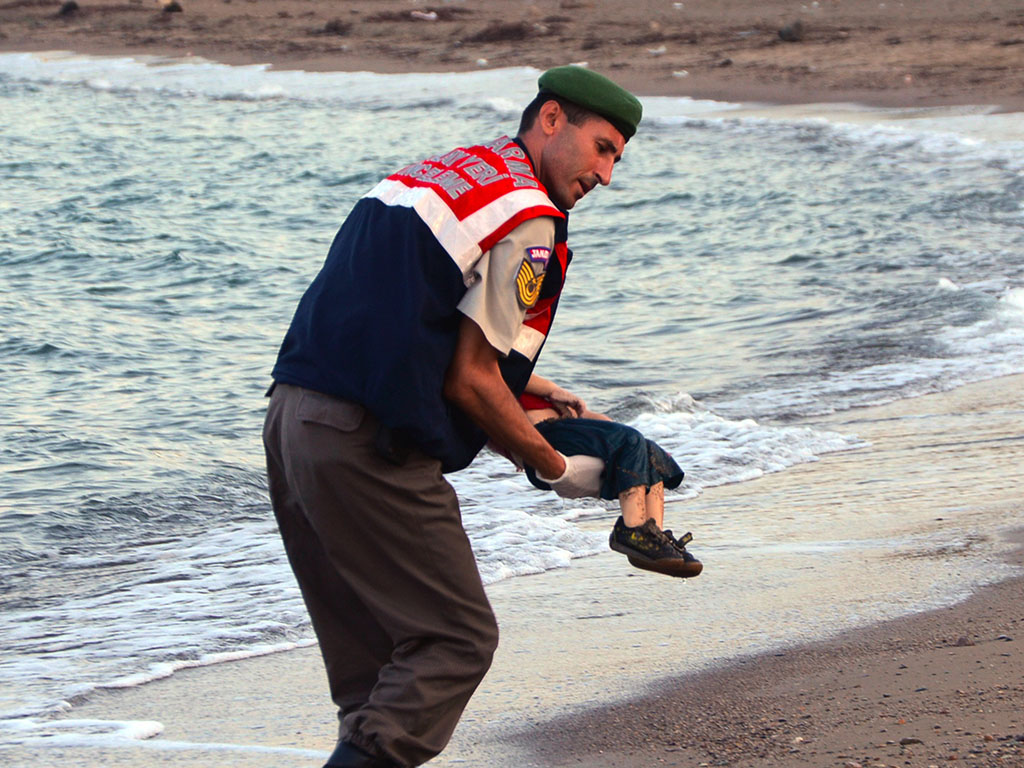
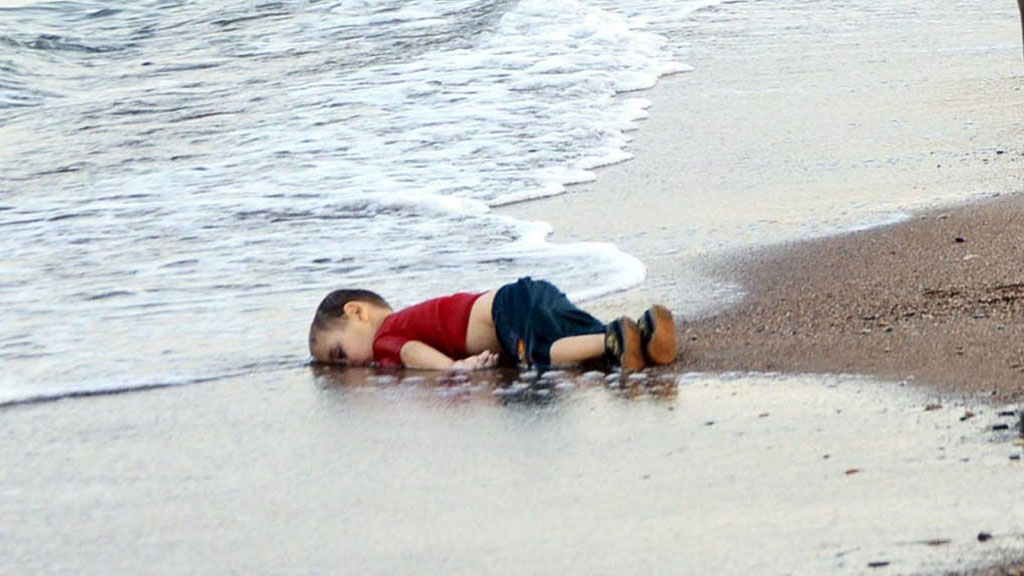
Here is a link to another article about the photographer who took the photos of the dead Syrian boy where she speaks about why she took them.
For a different point of view read this blog post by photographer and lecturer, Lewis Bush where he discuss the above in light of recent images of dead Syrian refugees in Europe. Incorporate his views and include quotes, for or against your own analysis and point of view.
CASE STUDY 4: Jeff Wall, Canadian artists known for his large scale tableaux image presented in light-boxes
Today, most of his images resemble reportage and, as such, are likely to incense his detractors, who claim he’s not a “true” photographer. His most contentious new work, called Approach, shows a homeless woman standing by a makeshift cardboard shelter in which we spy the foot of what could be a sleeping vagrant. Wall tells me it was shot under an actual freeway where the homeless congregate and that “it took a month to make, working hands-on” – but he won’t divulge just how staged it is. Is this an actual homeless woman, or an actor? Is the shelter real, or was it built by Wall’s team of assistants to resemble one?
Re-creating images from memory is crucial to Wall’s practice – perhaps because it flies in the face of the tradition of photography as an act of instant witnessing.
“Something lingers in me until I have to remake it from memory to capture why it fascinates me,” he says. “Not photographing gives me imaginative freedom that is crucial to the making of art. That, in fact, is what art is about – the freedom to do what we want.”
Read full interview with Jeff Wall here
In terms of truth or communicating an idea that make references to a real social problem such as homelessness, does it matter if the image is staged or not? Where does authenticity come into the picture?
CASE STUDY 5. The images of renowned photographer Steve McCurry, who made the famous and iconic image of an Afghan girl for a front cover of National Geography has recently been criticized for making ‘too perfect pictures’ which not only are boring but reinforces a particular idea or stereotype of the exotic other.
Read this article by Teju Cole in the New York Times Magazine which compares McCurry’s representation of India with a native photographer, Raghubir Singh who worked from the late ’60s until his untimely death in 1999, traveling all over India to create a series of powerful books about his homeland.
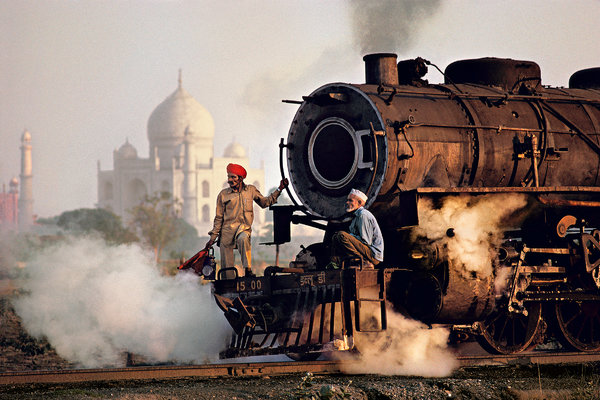

Reference to Coldplay’s new video also highlight the idea of cultural appropriation that harks back to Britain’s colonial rule and exploitation of the Orient.
Read this artcicle on Petapixel in In defense of Steve McCurry’s images
What is your view? Back it up with references to article read and include quotes for or against.
CASE STUDY 6:
Kevin Carter and The Bang Bang Club
Starving Child and Vulture
